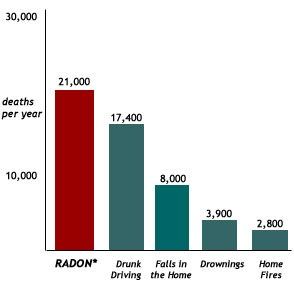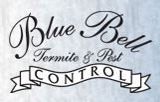Radon Testing
We perform DEP certified radon testing.
Radalink radon monitors are used in the testing procedure. These are continuous radon monitors that only measure alpha-radiation. They factor out all types of other background radiation.
Radalink radon monitors are used in the testing procedure. These are continuous radon monitors that only measure alpha-radiation. They factor out all types of other background radiation.
Radon
is measured in terms of pico-curies per liter (pCi/l). Four pCi/l of radon or lower is the standard that the Pennsylvania DEP has set as the acceptable level with which the house is measured.
Radon is an invisible, odorless, radioactive gas produced by the decay of naturally occurring radium in rock and soil. Because it has no odor or taste, radon can only be detected with special monitoring equipment. Medical studies have linked radon exposure to cancer. Since the discovery in recent years of homes in New Jersey and Pennsylvania containing alarmingly high levels of radon, scientists have been taking a closer look at the impact of radon on the health of residents with homes demonstrating these levels.
Radon is an invisible, odorless, radioactive gas produced by the decay of naturally occurring radium in rock and soil. Because it has no odor or taste, radon can only be detected with special monitoring equipment. Medical studies have linked radon exposure to cancer. Since the discovery in recent years of homes in New Jersey and Pennsylvania containing alarmingly high levels of radon, scientists have been taking a closer look at the impact of radon on the health of residents with homes demonstrating these levels.

Radon Decay Series Chart
The following is an updated chart of the lifetime risk of lung cancer death per person from radon exposure in homes (excerpted from the updated radon risk assessment).
| pCi/L | Never Smokers | Current Smokersc | General Population |
| 20 | 36 out of 1,000 |
26 out of 100 | 11 out of 100 |
| 10 | 18 out of 1,000 |
15 out of 100 | 56 out of 1,000 |
| 8 | 15 out of 1,000 |
12 out of 100 |
45 out of 1,000 |
| 4 | 73 out of 10,000 | 62 out of 1,000 |
23 out of 1,000 |
| 2 | 37 out of 10,000 | 32 out of 1,000 | 12 out of 1,000 |
| 1.25 | 23 out of 10,000 |
20 out of 1,000 | 73 out of 10,000 |
| 0.4 | 73 out of 100,000 | 64 out of 10,000 | 23 out of 10,000 |
| a. | Assumes constant lifetime exposure in homes at these levels. | ||
| b. | Estimates are subject to uncertainties as discussed in Chapter VIII of the risk assessment. | ||
| c. | Note: BEIR VI did not specify excess relative risks for current smokers | ||
Radon
is a gaseous radioactive element having the symbol Rn, the atomic number 86, an atomic weight of 222, a melting point of -71ºC, a boiling point of -62ºC, and (depending on the source, there are between 20 and 25 isotopes of radon - 20 cited in the chemical summary, 25 listed in the table of isotopes); it is an extremely toxic, colorless gas; it can be condensed to a transparent liquid and to an opaque, glowing solid; it is derived from the radioactive decay of radium and is used in cancer treatment, as a tracer in leak detection, and in radiography. (From the word radium, the substance from which it is derived.) Sources: Condensed Chemical Dictionary, and Handbook of Chemistry and Physics, 69th ed., CRC Press, Boca Raton, FL, 1988.
EPA's Integrated Risk Information System profile on Radon 222 [CASRN 14859-67-7] is located at: a.gov/iris/subst/0275.htm
EPA's Integrated Risk Information System profile on Radon 222 [CASRN 14859-67-7] is located at: a.gov/iris/subst/0275.htm
Conversion Factors for Radon Units
Radon is an invisible, odorless, radioactive gas produced by the decay of naturally occurring radium in rock and soil. Because it has no odor or taste, radon can only be detected with special monitoring equipment. Medical studies have linked radon exposure to cancer. Since the discovery in recent years of homes in New Jersey
and Pennsylvania
containing alarmingly high levels of radon, scientists have been taking a closer look at the impact of radon on the health of residents with homes demonstrating these levels.
We provide a 1-Year
warranty with all WDI Inspections.
Call us today
at 215-491-7412
to have your house inspected for termites!






